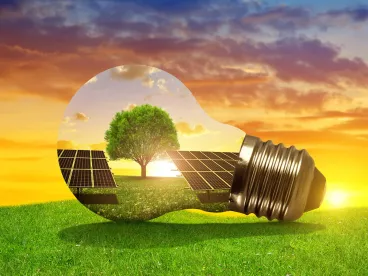FERC Plans Technical Conference on Financial Assurances for Hydroelectric Projects
The Federal Energy Regulatory Commission (FERC or Commission) has issued notice of a technical conference to be convened to discuss financial assurance measures for hydroelectric projects. The Commission initially issued a Notice of Inquiry (NOI) inviting comments in January 2021, on whether FERC should require financial assurance measures in hydropower licenses and other authorizations. Triggered by public safety events in the past several years, the NOI postulated that a number of hydropower projects are non-operational or out of compliance with the license and the licensees cannot afford to address environmental or safety issues to meet FERC’s standards. Based on concerns that inadequate financing may result in threats to public safety and environmental resources, FERC sought comments on whether additional measures should be required to ensure hydropower operators have the financial resources needed to operate and maintain their projects over the license term, including under unforeseen circumstances. VNF filed comments on behalf of a group of public power licensees in response to the NOI.
Since the NOI, FERC has already started to include license conditions reserving its authority to impose unspecified financial assurance requirements on the licensee whenever it issues a license, license amendment, or license transfer order.
More details on the conference are pending, including how to participate as a panelist. The conference will be virtual and will be held on Tuesday, April 26, 2022.
D.C. Circuit Remands City of Miami Complaint to FERC
In City of Miami, Oklahoma v. FERC, the U.S. Court of Appeals for the D.C. Circuit on January 18, 2022, issued an eight-page opinion summarily remanding to FERC a complaint filed by the City of Miami claiming flood damages caused by the FERC-licensed Pensacola Project. FERC had rejected the City’s claim that the licensee failed to comply with Standard Article 5 of its license, which requires a licensee to acquire all non-federal lands necessary to construct, operate, and maintain a project. FERC findings of violation of Standard Article 5 are rare, and FERC typically allows the licensee wide latitude to determine what flowage easements to acquire since the licensee, not FERC, is responsible under Federal Power Act Section 10(c) for any property damages the project may cause. In addition, in the case of the Pensacola Project, special federal legislation designated the U.S. Army Corps of Engineers (Corps) responsible for managing the project reservoir for flood control. The Court lambasted FERC’s reasons for rejecting the complaint as “surprisingly unpersuasive” and “an administrative law shell game,” and remanded the case to FERC for further explanation. The case is worth watching as it may upset long-standing expectations about the extent of a licensee’s obligations under Standard Article 5.
Shifting Baselines: New Guidance from the Corps and NMFS on ESA Compliance for Work on Existing Structures
The Corps and the National Marine Fisheries Services (NMFS) (together, the Agencies) issued a joint memorandum addressing the Agencies’ process for evaluating the environmental effects of projects involving existing structures (such as dams, docks, or piers) on listed species and designated critical habitat in Endangered Species Act (ESA) Section 7 consultations (the Memorandum). Building off existing NMFS regional guidance, the Memorandum, applicable nationwide, purports to resolve uncertainty in how the Agencies characterize and analyze projects involving the maintenance, repair, replacement, or modification of an existing structure in their Section 7 consultations. To do so, the Agencies attempt to add clarity to their approach for evaluating the future impacts of an existing structure as “effects of the action” or as part of the “environmental baseline” in an ESA Section 7 consultation.
Specifically, the Memorandum provides how the Agencies will conduct Section 7 consultations for Corps Civil Works projects and for Corps-permitted projects. With regard to Corps Civil Works projects, the Memorandum recognizes that an existing structure can cause two different types of impacts: the long-term effects that result from the “the existence” of the structure (i.e., the fact that the structure is physically present), and the short-term effects that result from actions taken to maintain the structure. In addressing the first type of impact, the Memorandum states that the Corps does not have discretion to cease to maintain or operate Congressionally authorized projects or facilities, and therefore the effects of such a structure existing in the future would be considered part of the environmental baseline. In addressing the second type of impact, the Memorandum states that short-term effects (e.g., construction impacts) and other parts of the action involving Corps discretion (e.g., manner and timing of maintenance or operations) would “generally” be included and evaluated in the effects analysis. For Corps-permitted projects, the Corps acknowledges that it has discretion to issue or deny a regulatory permit to maintain, repair, replace, or otherwise modify an existing structure, and that in deciding whether to grant such a permit, it will consider the impacts of its decision on ESA listed species and critical habitat. Accordingly, the Agencies will evaluate whether the future impacts of a project involving an existing structure should be considered effects of the action by determining what consequences would not occur “but for” the action and are “reasonably certain” to occur.
Implications of this Memorandum include the potential that shifting certain effects of existing structures from baseline to effects of the action, will enable NMFS to include Reasonable and Prudent Measures or Reasonable and Prudent Alternatives that are broader in scope, with correspondingly greater impacts to private project proponents. These implications are outlined in more detail in our alert on this topic.
Army Corps Finalizes 41 Nationwide Permits for Activities in Jurisdictional Waters and Wetlands
On December 27, 2021, the Corps published a final rule modifying the Corps’ Nationwide Permit (NWP) program (December 2021 Final Rule). In January 2021, the Corps published a final rule reissuing a subset of the existing NWPs and issuing four new NWPs (January 2021 Final Rule). The December 2021 Final Rule reissued the 40 remaining NWPs not covered by the January 2021 Final Rule as well as one new NWP. The December 2021 Final Rule relied on the same proposed rule as the January 2021 Final Rule, eliminating the need for a separate step in the rulemaking process.
The Final Rule updates several existing NWPs, including NWP 13 (Bank Stabilization); NWP 14 (Linear Transportation Projects); NWP 17 (Hydropower Projects); NWP 24 (Indian Tribe or State Administered Section 404 Programs); NWP 27 (Aquatic Habitat Restoration, Enhancement, and Establishment Activities); NWP 36 (Boat Ramps); NWP 41 (Reshaping Existing Drainage and Irrigation Ditches); NWP 49 (Coal Remining Activities); and NWP 53 (Removal of Low-Head Dams); and NWP 54 (Living Shorelines).
The Final Rule also adds NWP 59 (Water Reclamation and Reuse Facilities). This NWP authorizes discharges of dredged or fill material into waters of the United States for the construction, expansion, and maintenance of water reclamation and reuse facilities.
The NWP changes will impact the expiration date of existing coverage verification under the 2017 NWPs. When the Corps modifies existing NWPs, the modified NWPs replace the prior versions of those NWPs, so that there are never two sets of NWPs in effect at the same time. To accomplish this replacement, the Corps modified the expiration date for the 40 existing NWPs. The 2017 NWPs were originally set to expire on March 18, 2022. Now, the 40 existing NPWs modified in the Final Rule will expire three weeks earlier on February 24, 2022. The December 2021 Final Rule also explains that, if construction activities planned in reliance on an NWP have commenced or are “under contract” to commence prior to the expiration date, then those activities will remain authorized for 12 months after the expiration date.
The 41 NWPs in the December 2021 Final Rule go into effect February 25, 2022. Once effective, any modified or new NWPs will remain subject to further restrictive terms and conditions imposed by Corps district offices, State agencies, and Indian Tribes to ensure that activities authorized by the NWPs result in no more than minimal individual and cumulative adverse environmental effects. The 41 NWPs will not be available for use until that review process by district offices, State agencies, and Indian Tribes is completed.
DOE Issues Notice of Intent for Building a Better Grid Initiative to Support Decarbonizing the Electric Supply
The U.S. Department of Energy’s (DOE) Office of Electricity on January 12, 2022, issued a Notice of Intent for a new “Building a Better Grid” initiative to work with community and industry stakeholders to identify national transmission needs and support the buildout of long-distance, high voltage transmission facilities critical to reaching President Biden’s goal of 100% clean electricity by 2035 and a zero-emissions economy by 2050. DOE believes that the initiative will facilitate clean energy generation, including connecting areas with significant renewable energy resources to demand centers and linking together independently operated grid regions.
Implementation of the Building a Better Grid initiative will focus on: (1) consulting and working collaboratively with stakeholders, including other federal agencies, state and local governments, regional transmission organizations, utilities, American Indian and Alaska Native Tribal nations, industry, unions, local communities, and environmental justice organizations; (2) facilitating transmission planning including a national transmission needs study; (3) financing transmission development; (4) facilitating transmission citing and permitting including use of the Federal Permitting Improvement Steering Council; and (5) carrying out research, development, and demonstration projects including grid-related energy storage.
Salmon Focused Investments in Sustainable Habitats Act Would Expand Protections for Salmon Habitat
On January 25, 2022, Rep. Jared Huffman (D-CA) introduced the Salmon Focused Investments in Sustainable Habitats Act (or the Salmon FISH Act), H.R. 6491. The bill would provide for the National Oceanic and Atmospheric Administration (NOAA) and the U.S. Fish and Wildlife Service (USFWS), in cooperation with the U.S. Forest Service (USFS), Bureau of Land Management, National Park Service, and Bureau of Indian Affairs, to identify, publish, and regularly update a list of “salmon conservation areas” and “salmon strongholds.” In identifying these areas, the federal agencies would be required to consult with states and Indian Tribes with land, fishing rights, or cultural ties to the area, and would have the discretion to consult with nongovernmental organizations, scientists, and members of the public. States, Tribes, and the public would be permitted to nominate areas for identification. The bill appears aimed at protecting salmon streams that are not currently protected as critical habitat under the ESA.
Identification would have the following effects: (1) the U.S. Department of Agriculture would be required to prioritize forest road decommissioning and fish passage projects in or affecting these areas, and ensure that such projects do not degrade identified areas; and (2) federal agencies would be required to notify the Secretary of State, and the Secretary of State would be required to engage in consultation with Canada and take certain other actions, to resolve any transboundary pollution or other Canadian actions negatively impacting these areas. Opponents of developmental uses of salmon “strongholds” and “conservation areas” also could be expected to cite their special status as a basis for blocking projects.
The bill would authorize $40 million per year for five years for USFS to preserve watersheds that are salmon habitat and to identify additional priority watersheds in National Forests that include salmon conservation areas or salmon strongholds.
In addition, the bill would direct USFWS, in collaboration with NOAA, to carry out a Salmon Conservation Area Grant Program to issue grants for the following purposes: (1) to protect or maintain salmon conservation area or salmon stronghold features and projects that are focused on conservation and restoration within salmon conservation areas or salmon strongholds; (2) to address factors threatening to limit abundance, productivity, diversity, habitat quality, or other biological attributes important to sustaining viable salmon populations; (3) to restore or maintain ecological functions and processes related to salmon productivity and diversity at watershed or subwatershed scales; (4) to improve the resilience of salmon populations in response to acute events such as fires, landslides, and earthquakes; (5) to improve the resilience of salmon populations to climate change and prepare populations for other future changes; (6) to provide co-benefits to fish and wildlife, in particular where salmon can be used as indicator species for habitat quality; (7) to implement focused, prioritized protection and restoration in watersheds; and (8) to improve conservation area or salmon stronghold resilience both downstream and upstream. Within these purposes, grants could be used to fund a very broad range of activities, including, but not limited to, land acquisition, conservation easements, purchase of mining and water rights, habitat restoration and rehabilitation, outreach and local engagement, and monitoring and research. The bill would authorize $50 million per year for five years for this program.









 />i
/>i

